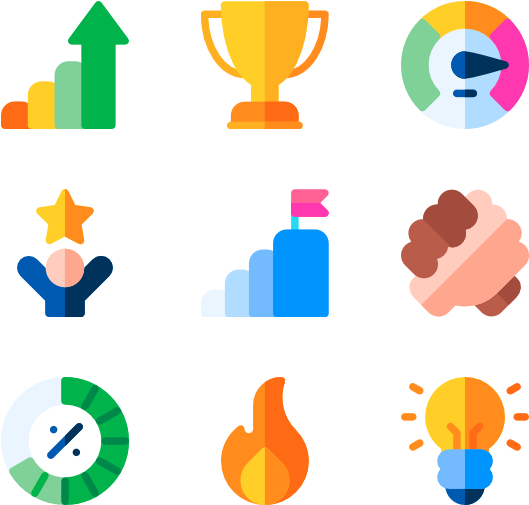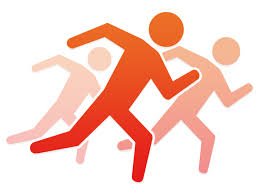15 Proven Strategies for High-Impact Product Development
In today's dynamic business landscape, successful product development is paramount for competitive advantage. Creating truly innovative and profitable products demands meticulous planning, seamless execution, and a profound understanding of your target audience. This article outlines fifteen crucial strategies, each supported by compelling real-world examples, to guide your product development journey toward success.
1. Deep Dive into Market Research: Before even conceptualizing your product, a thorough understanding of the market is non-negotiable. Analyze prevailing customer trends, scrutinize your competitors' offerings, and identify unmet needs – the gaps your product can seamlessly fill. This foundational research forms the bedrock of your product's success.
Example: Apple's extensive market research revealed a significant demand for a user-friendly smartphone, directly leading to the revolutionary iPhone.
2. Crystal-Clear Goals and Objectives: Clearly defined goals and objectives are crucial for maintaining focus and measuring progress. These provide a roadmap, ensuring your efforts remain aligned with your overall business strategy and desired outcomes.
Example: Tesla's ambitious goal of revolutionizing the automotive industry fueled the development of their technologically advanced electric vehicles.
3. Cultivate a Collaborative Ecosystem: Encourage cross-functional collaboration to harness the collective expertise of your teams. A diverse perspective fuels creativity and fosters innovative solutions throughout the entire product lifecycle.
Example: Google's renowned "20% time" initiative empowers employees to dedicate a portion of their workweek to independent projects, fostering innovation and resulting in groundbreaking products such as Gmail.
4. Craft Compelling Customer Personas: Develop detailed customer personas to gain deep insights into your target audience. Understanding their needs, desires, and pain points allows for superior product customization and resonates more effectively with your market.
Example: Nike's meticulous development of customer personas enables the creation of specialized footwear designed for various sports and athletic activities, maximizing customer satisfaction.
5. Embrace Agile Methodologies: Adopt agile methodologies, such as Scrum, for iterative and adaptable product development. This flexibility enables rapid responses to evolving market dynamics and customer feedback.
Example: Spotify's frequent product updates and new feature releases exemplify the benefits of an agile approach, continuously improving their platform based on real-time insights.
6. Prioritize Early Prototyping and Testing: Develop and test prototypes throughout the development process. Gathering user feedback early on allows for iterative refinement and minimizes the risk of costly mistakes later in the process.
Example: Airbnb's commitment to early prototyping and rigorous user testing enabled them to identify critical features and establish user trust, significantly impacting their initial success.
7. Establish a Robust Feedback Loop: Implement channels for continuous feedback from customers and stakeholders. This active engagement ensures your product remains aligned with evolving needs and preferences.
Example: Facebook's comprehensive feedback loop, utilizing user surveys and focus groups, continuously informs product updates and improvements, strengthening user engagement.
8. Cultivate a Culture of Innovation and Adaptability: Continuously explore emerging technologies, market trends, and evolving customer preferences. Adaptability ensures your product remains relevant and competitive in a dynamic market.
Example: Amazon's relentless innovation, as demonstrated by the introduction of Echo and Alexa, has solidified their market leadership by anticipating and responding to evolving consumer demands.
9. Champion a Customer-Centric Culture: Prioritize customer satisfaction at every stage of product development. A customer-centric approach fosters loyalty and long-term success.
Example: Zappos' legendary customer-centric culture, exemplified by their exceptional customer service, has fostered a fiercely loyal customer base, contributing significantly to their sustained success.
10. Invest in Top Talent: Attract and retain skilled professionals who possess the expertise and creativity to drive successful product development. Your team is your greatest asset.
Example: Pixar's commitment to hiring top talent has resulted in the creation of groundbreaking animated films that have captivated audiences worldwide.
11. Prioritize Scalability and Sustainability: Design products with future growth in mind, ensuring scalability while considering environmental impact and sustainability.
Example: Tesla's focus on electric vehicles reflects their long-term vision of sustainable transportation, aligning with broader environmental concerns.
12. Forge Strategic Partnerships: Collaborate with complementary businesses or experts to expand your capabilities and create mutually beneficial opportunities.
Example: Starbucks' strategic partnership with Spotify enhances the in-store customer experience by incorporating customer-influenced playlists, demonstrating the power of collaboration.
13. Continuous Market Monitoring and Competitive Analysis: Stay abreast of market trends, customer preferences, and competitor actions to inform your product development decisions.
Example: Coca-Cola's responsiveness to health-conscious trends has led to the introduction of low-sugar and zero-calorie beverage options, demonstrating successful adaptation to evolving consumer demands.
14. Implement Robust Project Management: Utilize effective project management tools and methodologies to streamline processes, ensuring efficient resource allocation and timely product delivery.
Example: Trello's project management platform facilitates efficient task organization, progress tracking, and seamless team collaboration, maximizing productivity and efficiency.
15. Celebrate Successes and Learn from Failures: Acknowledge and celebrate accomplishments while viewing failures as valuable learning opportunities for continuous improvement.
Example: Google's "Moonshot" projects embrace ambitious ideas, even if they don't always succeed, fostering a culture of innovation and risk-taking that ultimately drives progress.
By implementing these fifteen strategies, businesses significantly enhance their chances of developing groundbreaking, customer-centric products that achieve market leadership. Remember that adaptability, collaboration, and a profound understanding of customer needs form the cornerstone of successful product development.






